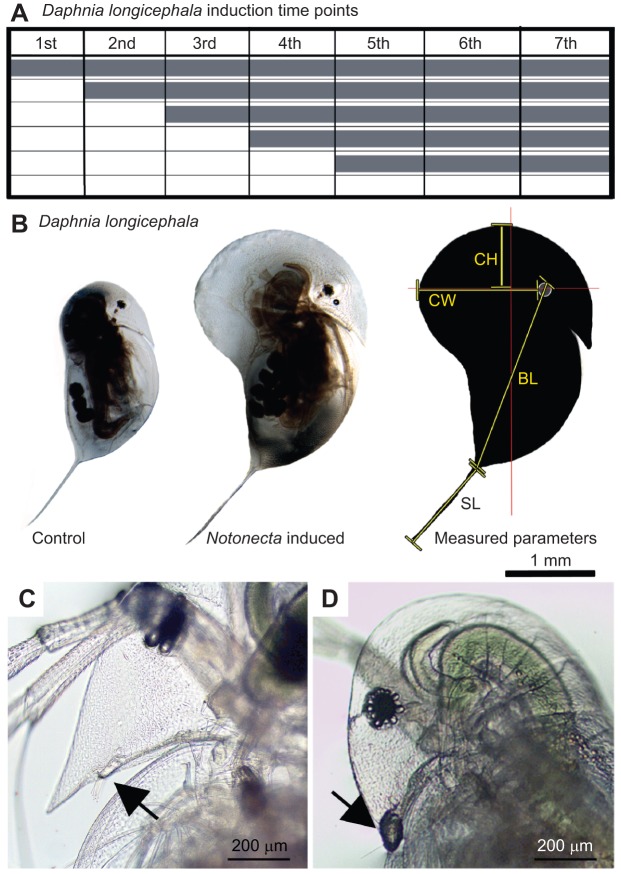Fig. 5.
Experimental procedures. (A) D. longicephala induction scheme. Animals were exposed to Notonecta kairomone starting in the 1st, 2nd, 3rd, 4th and 5th juvenile instars respectively (grey bars). Controls were performed in the absence of the kairomone. Photographic documentation started in the 2nd juvenile instar and was continued for all successive instars until animals deposited their 2nd clutch (7th instar). (B) Measurement of defences in D. longicephala. Control (left) and predator-exposed (middle) D. longicephala. Right panel shows measured parameters that quantify morphological defences (yellow lines) with respect to the body axis (red lines). BL, body length; SL, spine length; CH, crest height; CW, crest width. (C) First antennae of a female D. longcicephala (black arrow). (D) First antennae of a female D. longicephala covered with underwater glue.

